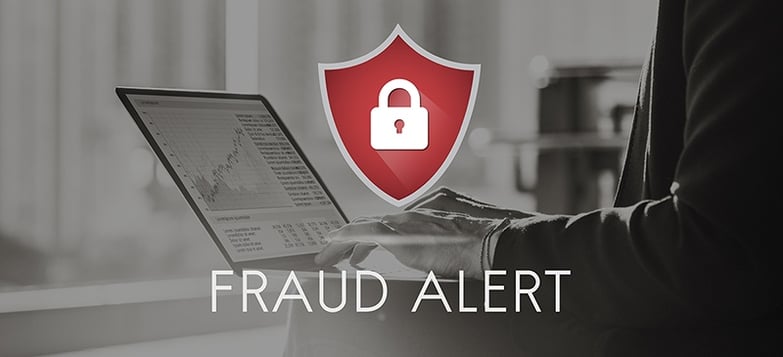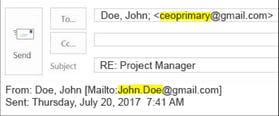
Cybercrime, including identity theft, is on the rise and the maritime industry is not immune. A massive cyberattack in June 2017 impacted many multinational companies around the world, including the world’s largest shipping line. While technology can help, defending against malicious activity often comes down to user awareness. Take emails for example. Have you ever wondered if an email you have received from a seemingly legitimate email address is real or fake? As reports of cybercrime continue to rise, it's increasingly more difficult to know if what you're clicking on is safe. Cyber criminals now excel at generating realistic phony emails from seemingly safe domains in the hopes that you will open the message or click on included content. Doing so can then wreak havoc on computer systems with devastating effects, or cause you to inadvertently divulge confidential company or personal information to con artists.
Please note: Crowley collects personal information you choose to provide through our recruiting portals. We will not contact you to provide personal information during the recruiting process or when an offer is presented. If you have any questions about a communication you received from us, please contact us at 1-800-CROWLEY or careers@crowley.com.
To help you stay safe online, Information Technology experts recommend you consider these eight easy tips to verify the authenticity of email communications.
8 easy tips to spot an email scam
1. Can you call the sender?
If you are unable to reach the sender by phone, beware. Often cyber criminals will go to great lengths to appear unavailable via other channels.
2. Is the communication from someone who never emails you?
If not, confirm the sender's intent with a quick phone call and consider that it may not be authentic.
3. Click reply and check the sender's email address twice.
A safe way to check whether an email is fraudulent is to see what happens when you click reply. If the sender's email address in the TO line doesn't match the one shown in the FROM line, the email is very likely bogus.
Do not reply or try to engage in any way with the potential fraudster.
4. Consider the urgency of the message.
If the email requests immediate execution or action, suspect fraud since emails are rarely the top choice for urgent communications.
5. Ask yourself if the information is written clearly.
Lack of detail, poor translations and sketchy or confusing information when details are provided are red flags for email fraud.
6. Confirm whether the sender is from an organization or company you are associated with.
If not, it could be a scam.
7. Check the dates.
Many infected emails come through marked with European dates. While this isn't always an indicator of cyber crime, it's an important detail to note, especially when combined with any of the other factors on this list.
8. Does it feel right?
Do a gut check. If you have any hesitation about the authenticity of an email, don't open it. It's better to exercise caution with each and every email received than to become a victim of cyber crime.
Final thoughts
It's important to remember that even when all of the above techniques are used, fraudulent emails can still threaten your safety online. Don't open attachments in suspicious communications until you have verified authenticity of the email with the sender. The bottom line? If you're ever unsure whether the email is real or fake, delete it.




